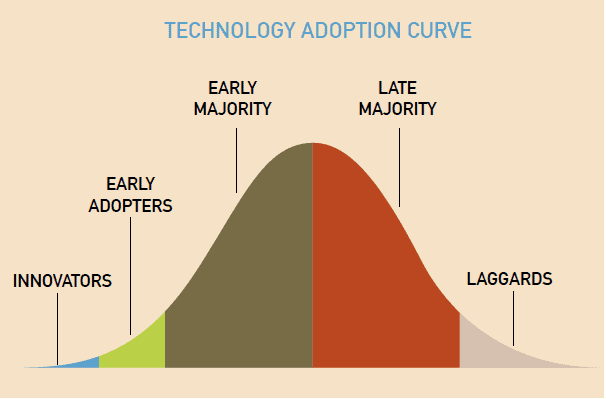Your life is curated. The coffee you’re drinking, the videos you’re streaming and that pair of Converses you’re wearing—all your choices were driven by what was available and desirable. But who put those options there? Who decided that Nestlé should create an espresso machine? Who made YouTube a household name? Who told Nike to purchase Converse?
 Product managers and strategists drive such decisions and thus shape your world. Both choose which problems to solve and which goals to go after. Both turn grand visions into tangible goods and market realities.
Product managers and strategists drive such decisions and thus shape your world. Both choose which problems to solve and which goals to go after. Both turn grand visions into tangible goods and market realities.
But their worlds are often disparate. Product managers and strategists see things through different lenses and maintain often-opposing priorities. Most companies value one or the other and keep the two worlds separate. In such a system, product managers and strategists provide competing perspectives, rather than empowering one another to create exponential wins for both customers and the business. However, they’re actually two halves of a functional whole. To address the range of challenges modern markets present, both perspectives are necessary to win and keep winning. But to understand how the two can collaborate, we must first understand how each thinks.
Product people connect customer needs with business goals to produce goods and services that people use and buy, enabling the company to compete. As a field, it has become significantly more important to effective competition within the past few decades, particularly as the tech industry has risen. The direction can come from the top (product executing on executives’ visions) or from the bottom (product weaving features into marketable stories).
Strategists consider the external and internal landscape to identify market gaps and opportunities, enabling the company to compete. As a field, it’s often held close to the executive team. The role is mature, but the nature of strategic work has changed significantly in past decades: Competitive advantage has shifted from being the best at a particular thing to being the most adaptable to evolving markets and customer needs.
When the two come together, companies often find breakthrough successes. Perhaps one of the clearest recent examples of this is the Nespresso system: The product addressed a strong (mostly unmet) need for high-quality but also high-convenience espresso, while the strategy enabled Nestlé to sustain growth through subscription sales and hardware licensing.
To put it simply, both product and strategy aim to fulfill a company’s why. Product begins with the what and strategy begins with the how.
How Each Role Thinks at Each Stage
Note: The definitions of product management and strategy are fuzzy and ever-evolving, so consider this a starting point to enable better collaboration, rather than a set of hard-line distinctions.
Breaking into the Market Product people find gaps of unmet needs using market research. They identify problems with the strongest market impact by prioritizing the list by highest pain or widest reach. For example, YouTube allowed customers to share and consume large video files by simultaneously downloading and watching them (a.k.a. streaming), rather than having to wait for the entire file to download first—a particularly important need given the speed of the internet in 2005. Product people pursue solutions to impactful customer problems, which then produce value for the business through direct or indirect sales.
Strategists find gaps in the market via competitive analysis. They identify the biggest opportunities by considering what highly successful competitors are doing which they could do better, or areas competitors might have missed, which they could easily address. For example, Trader Joe’s realized that rather than selling private-label products as a cheaper alternative, it could reframe those products as a marker of quality and relevance for customers. Strategy determines which opportunities can produce maximum new customer and business value.
Breaking Through to the Top of the Market
Product people win by addressing important unmet needs or by addressing met needs better than their competitors to the point that they drive customers to switch products. For example, the iPod, while not the first digital music player, introduced the shuffle feature and was the first to display names of songs instead of file names, creating a superior experience. Product focuses on a clever what.
Strategists win by capturing opportunities in unique ways. They have figured out how to sell the same things cheaper (e.g. through strategic partnerships or complementary revenue streams) or how to create new value from what they’ve already got (e.g., by addressing new markets). For example, Uber accomplished both of these simultaneously by realizing they could provide cheaper taxi services by turning their customers into suppliers via UberX. Strategy focuses on a clever how.

Scaling Success
Product people scale their solutions by meeting the needs of wider audiences. As their products are adopted by more diverse customers, they adapt their products to these new customers who have different needs. This is known as the Technology (or Product) Adoption Curve.
Strategists scale their solutions by improving the business model to undercut competitors and create new value. They might forge new partnerships to cut costs, identify new marketing channels by which to reach customers, or find new revenue streams for the same opportunities. The Business Model Canvas is a useful tool for identifying these opportunities.
Maintaining a Competitive Advantage
Product people continue to create new or complementary features and products to address evolving customer needs. Once they’ve solved one customer problem, they might unlock related or adjacent customer problems. For example, as Google became a dominant email provider with Gmail, the offer of a matching calendar, and eventually a suite of productivity apps was a natural progression of user needs. As competitors catch up, markets reshape and customer expectations change, product people evolve their products, continuously searching for today’s most relevant needs. To advance, adaptability is key.
Strategists continue to find new ways to create value for the business and for customers as competitors, markets and customers change. For instance, once they create a set of strategic partnerships for one product, they might realize they could leverage the network to easily create another one. Amazon did this by turning its internal virtual server system—which was created to increase Amazon’s retail efficiency—into an external product that acts as its own revenue stream, Amazon Web Services. As new competitors enter, markets grow or shrink and customer expectations change, strategy continuously searches for new ways to gain the edge. To advance, flexibility is key.
Reconciling Product and Strategy
Some companies, particularly within tech, have figured out how to leverage the best of both worlds. Facebook, for example, is widely believed to have originally won the market by creating exclusivity around social networks, a strategic decision rather than one that directly solved a need. But this exclusivity was created around real-life networks, a decision which (knowingly or not) addressed a customer need by enabling people to use their real identities and create an online life that complemented their real lives.
Fast-forward a decade and Facebook is building drones to bring internet access to remote areas (a strong customer need), addressing the strategic problem that it has saturated its accessible markets. Facebook has arguably mastered the balance of product and strategy, crafting solutions that empower their business by solving problems for their customers.
Amazon is (perhaps controversially) another elegant example of this balance — its commitment to passing profits back to customers in the form of low prices gives it a strategic advantage almost impossible to crack (even when competitors attempt to temporarily take on losses), and this business model only remains sustainable as long as it is a market leader. Amazon has created a cycle in which it takes the lowest profits, so it can offer the lowest prices and attract the most customers, which keeps it alive despite having the lowest profits. Customer needs are met in the best way possible through a strategy that is incredibly difficult to replicate.
These examples and the interplay between product and strategy that we see today are only the tip of the iceberg. Most modern companies still prefer—or excel—at one or the other, and the roles rarely speak, each often lacking an understanding or awareness of the other. Imagine how much more value we could create for businesses and customers alike if we changed that.
Author
-

The Pragmatic Editorial Team comprises a diverse team of writers, researchers, and subject matter experts. We are trained to share Pragmatic Institute’s insights and useful information to guide product, data, and design professionals on their career development journeys. Pragmatic Institute is the global leader in Product, Data, and Design training and certification programs for working professionals. Since 1993, we’ve issued over 250,000 product management and product marketing certifications to professionals at companies around the globe. For questions or inquiries, please contact [email protected].








